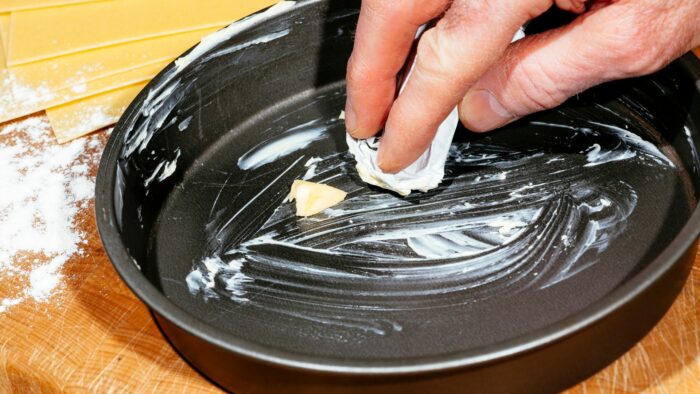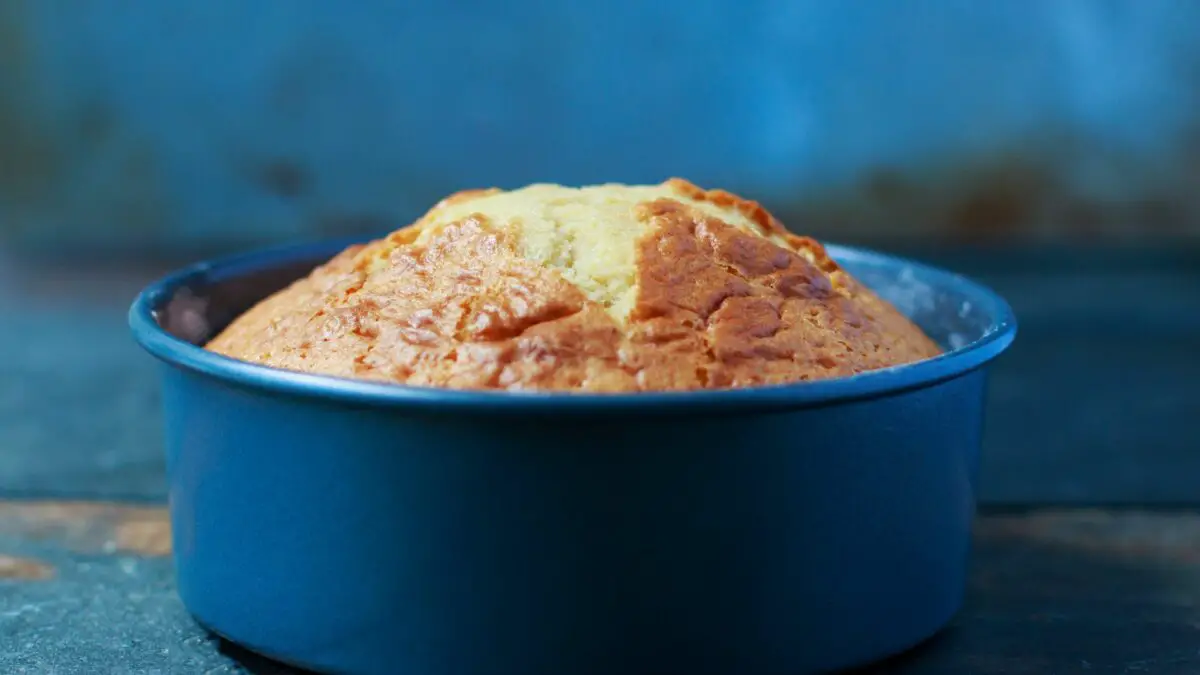Last Updated on February 15, 2023
How many times have you had the “cake sticks to the pan” problem? Here’s how to solve it!
In our opinion, the phrase “moment of truth” is most suitable for situations that require a lot of precision, skill, and patience, such as, to be honest, removing a freshly baked cake from the pan. It’s quite an unpleasant feeling, isn’t it? Frustrating, even more so.
When you think about it, there are only a few kitchen disasters worse than a cake that’s stuck pretty hard to the pan. It’s been a few years since we last shed tears because we had to crumble someone’s birthday treat into pieces, which is exactly why we decided to share our knowledge with you. Stay here and find out how to solve the cake sticks to the pan problem.
Why Does The “Cake Sticks To the Pan” Problem Occur?
Read below what are the main causes of this problem.
-
Insufficiently greased pan
Although you can get cake pans that don’t need to be greased because of the material they are made of, always keep in mind that many recipes actually call for a greased pan. If you tried your best to make a cake and then poured it into an ungreased or insufficiently greased pan, and the cake absolutely sticks to the walls after baking, unfortunately, that’s your fault.

-
Wrong baking spray
Did you know that not every baking spray is equally suitable for every purpose? Namely, in your local market, you should be able to find a spray specially made for baking cakes and other desserts. Keep in mind that it may cost a little more than a regular spray, but trust us, it’s worth it.
-
Non-custom size parchment paper
You don’t need to be an experienced confectioner to know that parchment paper is a must-have. It’s an easy way to prevent and avoid the “cake sticks to the pan” problem.
Unfortunately, in a hurry, most people don’t do enough to adjust the size of the paper and either don’t cut it at all or cut it too small. We strongly advise you to take enough time to cut your circle to fit as perfectly as possible.
How To Make Cake Not Stick To The Pan?
Although there is no universal rule or one, unique method that will work for everyone equally, we think that you should be able to remove the cake from the pan without it sticking if you grease and flour it and then line the bottom of the pan with parchment paper.
It’s sad to say, but we have noticed that there are a few terms that get thrown around in baking assuming everyone understands what the term means. This may not always be the case, but in most cases, we have noticed that beginners struggle a lot to find the right path in all of this. Luckily, we are here for you, so don’t hesitate to ask us a question in the comments section below whenever you are having trouble.
How To Get A Cake Out Of the Pan Without Sticking?
Baking a cake from scratch can be an incredibly satisfying experience unless the worst happens and your cake sticks to the pan. What a miserable feeling when you really put in the effort, bake it, take it out of the oven, it looks and smells fantastic, and then a real disappointment…
No needs to panic though, even if the cake sticks to the pan, it doesn’t mean the battle is lost. These are the steps you can take to get your masterpiece out of the pan without sticking.
Step No. 1: Allow it to cool
Honestly, you can’t go wrong if you let your cake cool completely as it allows the structure to solidify. Note that this doesn’t apply equally to all cakes, but if your cake requires it to be removed from the pan immediately after baking, this will be specifically noted in the recipe. Therefore, don’t worry, we have got you covered!
You can also leave your “gem” to cool on the wire rack. Namely, such a cooling method speeds up the process as it allows air to circulate underneath the cake pan.
Step No. 2: Slowly loosen the edges
To do this without damaging the cake, it helps a lot to run a thin and sharp kitchen knife or offset spatula around the edge of the cake to loosen it.
Step No. 3: Turn the cake over
We don’t want to lie to you, but it’s best to flip that pan over as carefully and quickly as possible, and then all you have to do is hope for the best. It would be good if you could cover the cake pan with the inverted platter and only then invert/flip it over. In terms of our experience, the cake actually popped out every time without any problems.
When Do You Take A Cake Out Of The Pan?
Anyone who has baked at least one cake in their lifetime will confirm that it can be tricky at times, given that there is so much to take into consideration, but it is very possible to end up with great success.
In short, after you take the cake out of the oven, it will take some time to settle. It’s very important not to skip this because you could end up with a “cake sticks to the pan” problem or a crumbly cake that’s best thrown in the trash. Patience is a virtue, right?
How Long To Cool A Cake Before Taking It Out Of the Pan?
Although there is no universal rule, it is best to aim for a time period of 10 to 30 minutes before removing the cake from the pan. Namely, you don’t want to drag it out too long because otherwise, you are going to make your job more difficult, it would be good if the cake stays warm enough to be easily maneuvered out of the pan.
Read more about Why Do Cakes Fall When Cooling? (Simple and Easy Fixes)
To Conclude
Although it may seem quite demanding to many, especially beginners, baking the most delicious cakes can be very simple if you know the basics. If you want to avoid the “cake sticks to the pan” problem, we advise you to grease and flour it and then line the bottom of the pan with parchment paper.
Have you ever had to throw a cake in the trash because you forgot to grease the baking pan? We look forward to reading about your favorite awkward moments in the section below.
For more baking tips, check out some of our other articles: What Is A Dummy Cake? The Ultimate Guide With 5 Easy Steps


